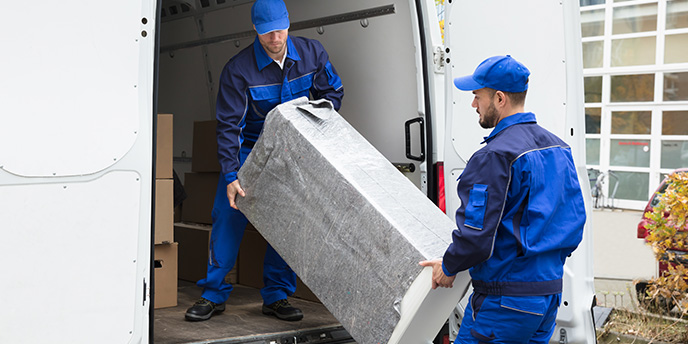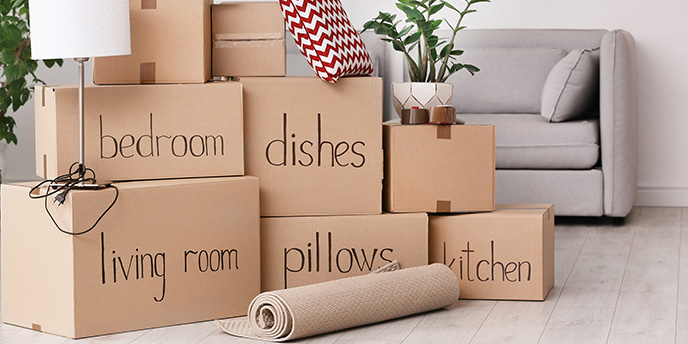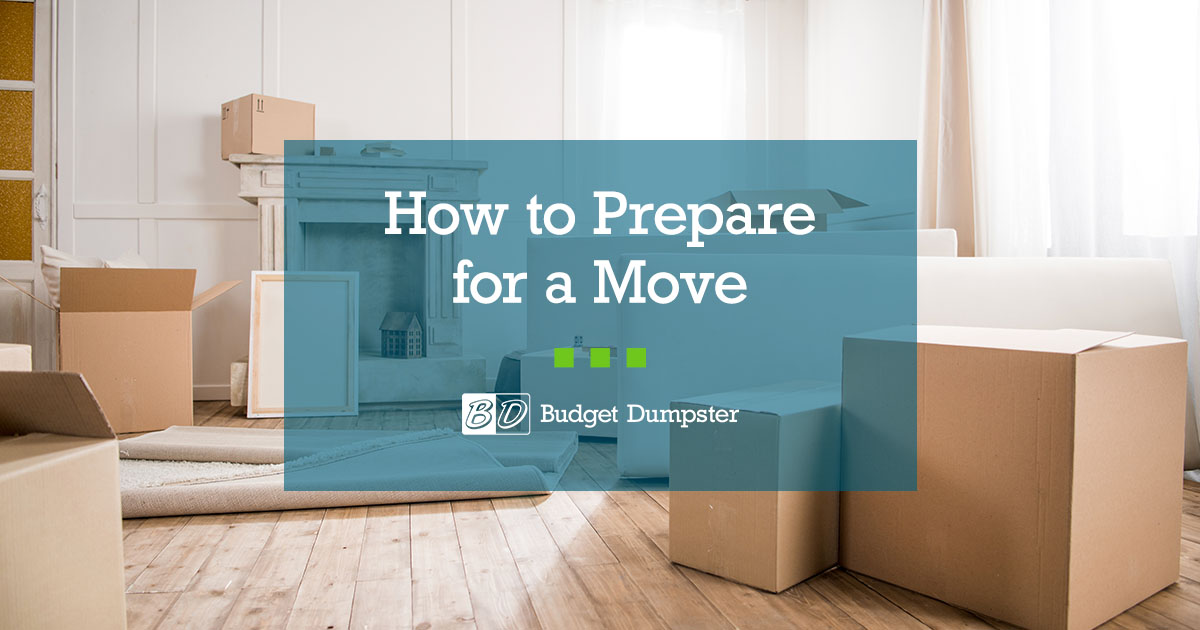Moving is both an exciting and stressful time for homeowners. Simplify the process by planning your move a few months in advance. Not sure where to start? With our move-out checklist, you can pack your things and change houses with ease.
When to Start Planning for a Move
We recommend preparing for a move at least two months before your move-out date. This gives you plenty of time to declutter your home, clean each room and pack up your things. Before calling the movers and buying storage containers, make a reasonable moving timeline. With a rough schedule of events, you won’t feel rushed or underprepared when moving day arrives. That said, the sooner you start planning, the better!
“You should start preparing for a move as soon as you know you are moving. The earlier you begin the moving preparations, the less stressful your move will be. So, start to declutter and decide which items you want to take with you to your new home and your new life. Ideally, you should begin your preparations at least eight weeks in advance. You can use a moving checklist to help you through the process.”
Ali Wenzke | Author, “The Art of Happy Moving”
How to Prepare for a Move
Create a Moving Timeline
A solid move-out plan has three distinct parts: budgeting, organizing and packing. Since the physical move is usually only one day long, the planning process will primarily focus on packing and organizing your belongings. If you’re not sure when to start preparing for a move, estimate how long it will take to declutter each room of your home. As a basic rule of thumb, we suggest setting aside at least one day per room. Only have time to prep over the weekend? You’ll probably need an extra week or two to get everything ready. Once you have a tentative timeline in mind, you can establish a moving budget.

Make a Moving Budget
There are many move-out expenses homeowners fail to consider. Whether you’re using professional movers or transporting your belongings with a U-Haul, make sure to plan accordingly. It’s important to note that your budget may impact your moving timeline. Working with a company will be more expensive but quicken the moving process. And while transporting everything yourself is cost-effective, your move could be extended by days or even weeks. No matter which route you take, there are certain things you’ll have to budget for.
“Always bear safety in mind, including your ability to lift and carry boxes, furniture, and other unwieldy items (possibly up porch steps or flights of stairs), without risking injury to yourself or damage to what you’re carrying. You may need to move speedily, and you and your family will be unlikely to move as safely and quickly as pros. Time and energy can be just as important as financial costs.”
Julie Bestry | Certified Professional Organizer, Best Results Organizing
If You’re Moving Yourself:
- Packing materials. You can’t move your entire house in a suitcase. Invest in heavy-duty boxes, bubble wrap and packing tape to transport your belongings safely.
- Furniture insurance. It costs a little extra to keep your furniture in pristine condition.
- Moving equipment. It’s important to unload your large and heavy items safely. A ramp and a dolly will streamline this part of the moving process.
- Gas. Chances are, you can’t move everything in one trip. If you drive back and forth more than once, you’ll probably need to fill up your tank.
“While you might want to save on supplies, make sure you use enough paper to protect things. If something is breakable, wrap it very carefully so it doesn’t break during the move. Used boxes can always be found for free in places like FB marketplace, Craigslist, etc.”
Robyn Reynolds | Certified Professional Organizer, Organize2Harmonize
If You’re Working With Professionals:
- Moving fees. You’re paying them to move your things, after all!
- Packing services. Professionals will save you the time and stress of packing for a move, but it will cost you.
- Unpacking services. Rather than unloading the truck yourself, the company will unpack your belongings for you.
- Courtesy costs. It’s polite to tip movers or treat them to lunch, which adds up fast.
“You need to budget for your move because costs add up. First, you will need to consider if you will rent a moving truck, move a storage container or hire professional movers. Regardless of which option you choose, the more you declutter and the less items you need to move, the less expensive your move will be. You will also need to budget for moving supplies such as moving boxes, packing tape, box cutters, sharpies, and bubble wrap. Other costs include cleaning supplies, new furniture, paint or decor for your new place, and license and vehicle registration if you are moving out of state.”
Ali Wenzke | Author, “The Art of Happy Moving”

Start Organizing for Your Move
When organizing your move, take things one room at a time. We recommend starting in the most clutter-prone areas of your home, like the basement or the attic. First, decide what you’re packing and what you’re throwing away. For this part of your move, check out our complete guide to decluttering your home.
“Moving is the best time to get rid of things you no longer want, need or use. Why pay to move them to another home when they serve no purpose?”
Robyn Reynolds | Certified Professional Organizer, Organize2Harmonize
Tips for Organizing Your Things
As you declutter, create a “toss” and “keep” pile for each room of your home – this is especially important if you’re moving into a smaller house. Once you know what you’re throwing away, focus on the things you’re taking with you. Use these tips to organize your belongings and simplify the packing process.
- Take inventory. Make a list of things you plan to keep in each room and check them off as you pack.
- Label boxes by room. Have separate boxes for your bedrooms, bathroom, kitchen, living room, etc. and mark them accordingly.
- List what each box contains. Along with the room name, write what each box contains. This will keep you from double or even triple-checking your inventory list.
- Keep things together. Planning to have the same furniture and artwork in your new family room? Keep them together to pack faster and more efficiently.

Start Packing for Your Move
Now that you have labeled boxes and storage containers, you can start putting things in them. To avoid getting overwhelmed, we recommend packing your barest room first. While planning your move, set aside at least one month for this part of the process. You should also pack your belongings strategically to use space (and gas) in your car, moving truck or U-Haul resourcefully. Use the following tips to make your move quick and productive.
Packing Tips for Moving
- Pack each room separately. Your storage boxes are already labeled, so use them correctly! Completely pack one room before moving on to another.
- Keep valuable items safe. Cover family heirlooms and other sentimental items in bubble wrap to keep them safe. You should also load them into your car carefully.
- Use smaller boxes for heavier items. It’s easier to carry a small heavy box than a large heavy box. This will keep you from packing too many heavy things together and make a box nearly impossible to move.
- Pack your tools last: If you need tools to take furniture apart, don’t box them up yet. Plus, you might need to make a few renovations when you move into your new home.
- Make a “first night” kit. Have a separate box for sheets, toiletries, phone chargers and anything else you might need for your first night in your new home.
“If there’s an item you love in one of your boxes, like your favorite cookbook or your cozy bathrobe, put a heart on the box. Then, when you unpack, start with your heart boxes first. That way you will be surrounded by your favorite items as soon as you get to your new home.”
Ali Wenzke | Author, “The Art of Happy Moving”
Make Sure Everything is Ready at Your New House
The utilities, walls and floors of your home should be up to your standard. Check out our move-in checklist before you spend the first night in your new house.
What to Do After Planning a Move
Once you’re packed and prepared to move out, you can focus on moving into your new home. Whether you need help unpacking or want to revamp a few rooms before settling in, we have you covered.











